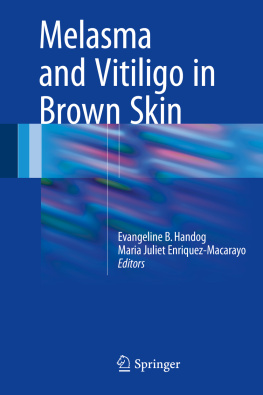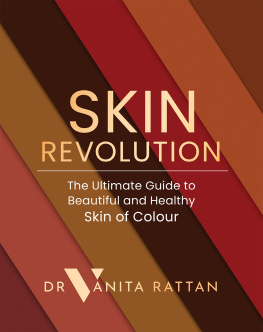1.1 The Color of Ones Skin Speaks of So Many Facets in Ones Life
It reflects ones physical traits, genetic components, history, nationality, and geographic roots. And by these, we mean ones race. Scientifically, skin color depends on many factors, genetics aside: inflammation, blood hemoglobin level, carotenoids in the dermis and increased melanin deposition. Melanin in itself is a polymer that comes as pheomelanin (red-yellow) and eumelanin (black-brown).
Brown, as a color, is a hue that runs between a mileage of the colors red and yellow, wooden, earthen or orange. Lightness is from medium to low, and saturation is from low to moderate [ shows the different shades of brown among the Filipinos.
Fig. 1.1
Different shades of brown among Filipinos
Brown skin people, as a category, may be considered a racial or ethnic classification, based on human skin color. As discussed by many learned authors as early as the eighteenth century, included in this category are populations from Africa (North), America (Latin and South) and Asia (Western, South, and Southeast).
Several classification schemes exist designating how a particular skin color reacts to several stimuli. For long, researches have followed the Fitzpatrick Phototyping Scale developed in 1975 by Dr. Thomas B. Fitzpatrick, based on the typical response of the different skin types to ultraviolet light. The majority of brown skin people are categorically placed in the skin phototypes IVV. The skin burns minimally to rarely but tans uniformly or more easily [].
The Lancer Ethnicity Scale (LES), introduced in 1998 by Dr. Harold A. Lancer, added ancestry to the existing Fitzpatrick skin type. With ethnicity background included, it aids in defining potential risks for patients undergoing cosmetic procedures. Higher risks abound a higher rate/score on this ethnicity scale. Moderate, significant, and considerable risks are seen in the LES types 3, 4, and 5, respectively. Asians (Chinese, Koreans, Japanese, Thai, Vietnamese, Filipinos), Polynesians, Americans (Latin, Central, South) and American Indians (Central and South) have skin type IV and LES type 4. Africans (Central, North, East, and West), Eritreans and Ethiopians, Middle East Arabic and Indians have skin type V and LES type 4 [].
The Roberts Skin Type Classification System, proposed by Dr. Wendy Roberts in 2006, deals with identifying a patients skin type characteristics. It further went on to predict the response of the skin to insult, injury and inflammation, detecting the susceptibility of sequelae for individuals of global skin types. Using four indices (phototype, hyperpigmentation, photoaging and scarring), optimal outcomes may then be identified for each patient [].
In todays society, differences in skin color have evolved due to environmental, dietary, and adaptive factors. Migration patterns and intermarriage practices have contributed to a montage in the races and ethnicities we were all familiar with. Geneticists have reported a very high percentage of variations within races rather than between races [].
An individuals skin color still speaks of ones race or ethnic roots. But in a world of skin afflictions, ones color speaks strongly of the ability of that individual to respond to specific treatments and procedures.
We took the courage to embark on this book , particularly giving opportune time to specifically deal with melasma and vitiligo in brown skin , believing there is a special need for this category of human skin .












